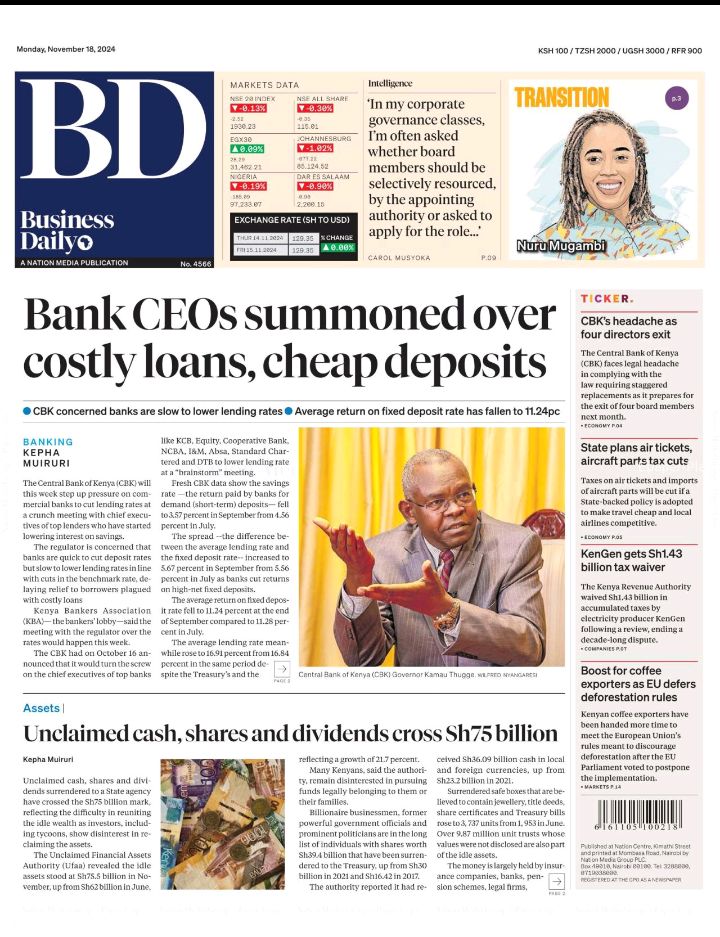The Central Bank of Kenya (CBK) is mounting more pressure on commercial banks to reduce borrowing rates. As a result, CBK has organized a crucial meeting with bank CEOs this week amid concerns that banks are quick to cut deposit rates but slow to lower lending rates following recent benchmark rate reductions.
Even though the CBK lowered its benchmark rate by 75 basis points to 12% on October 8 which is the largest cut since March 2020, fresh CBK data reveals that savings rates fell to 3.57% in September from 4.56% in July, while the average lending rate increased to 16.91% from 16.84% during the same period.
ALSO READ: CBK Accepts 12 Other Online Credit Providers
The disparity has led to an increased spread between lending and deposit rates, skyrocketing to 5.67% in September from where it was (5.56%) in July, as banks reduce returns on high-net fixed deposits to 11.24% from 11.28%.
Arguing on the matter, The Kenya Bankers Association (KBA) states that deposit rates are falling faster as banks anticipate future loan rate reductions, though they warn adjustments won’t be uniform under the risk-based pricing model.

This comes as private sector credit
growth has slowed to a 22-year low of 0.4% in September, the lowest since September 2003, prompting concerns from government officials including President William Ruto. The Central Bank of Kenya’s renewed push for lower lending rates brings into sharp focus a recurring challenge: the banking sector’s inertia in aligning with monetary policy shifts.
This struggle is rooted in history, exemplified by the failed Kenya Bankers Reference Rate (KBRR) introduced in 2014 to directly link lending rates to the Central Bank Rate (CBR). Despite its intent to foster transparency and reduce borrowing costs, the KBRR was shelved just two years later, exposing systemic inefficiencies in transmitting monetary easing benefits to borrowers.
Today, with the spread between lending and deposit rates widening to 5.67%, commercial banks cite risk-based
pricing as the justification for maintaining high rates, yet SMEs, pivotal to economic growth, remain disproportionately excluded.
As CBK intensifies oversight, it raises a critical question: is this a case of banks prioritizing profit over policy, or does Kenya’s financial framework require deeper reforms to foster an equitable and responsive credit market?